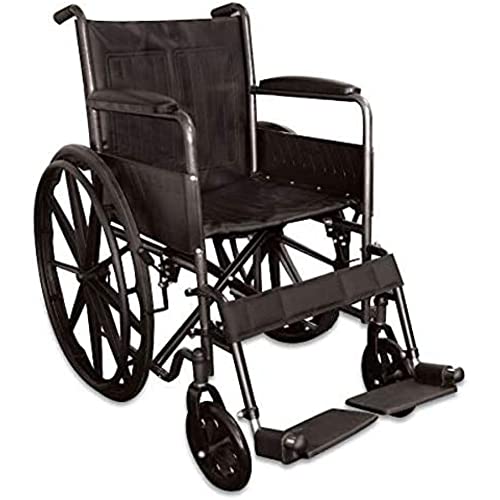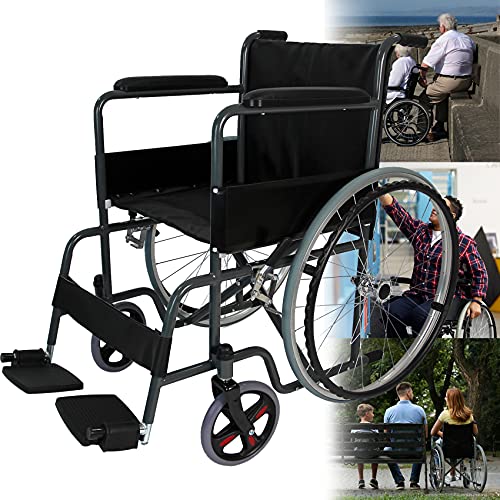Are You Confident About Doing Wheelchair Self Propelled? Answer This QвҖҰ
нҺҳмқҙм§Җ м •ліҙ
мһ‘м„ұмһҗ Izetta лҢ“кёҖ 0кұҙ мЎ°нҡҢ 2нҡҢ мһ‘м„ұмқј 24-11-24 20:25ліёл¬ё
 Wheelchairs self propelled (hangoutshelp.net)
Wheelchairs self propelled (hangoutshelp.net) It can be very limiting to rely on others to push you. Self-propelled wheelchairs (also called a manual chair) gives you the freedom to travel anywhere at a time that works for you and without waiting for someone else.
It can be very limiting to rely on others to push you. Self-propelled wheelchairs (also called a manual chair) gives you the freedom to travel anywhere at a time that works for you and without waiting for someone else.The first step in selecting the best wheelchair what is a self propelled wheelchair to consider the user's lifestyle and surroundings. Considering simple factors such as the maneuverability of the wheelchair and the turning force is essential.
Independence
Many people who use wheelchairs are concerned about losing their independence and noticing that they are reliant on other people to shop or take them out for excursions. A self-propelled wheelchair also referred to manual seats is a great solution to prevent this issue. It allows you to continue doing the things that you love without having to depend on other people.
Self-propelled wheelchairs are manually operated chairs that can be propelled and driven by the user via push rims on the rear wheels. It is simpler to drive a self propelled wheelchair-propelled wheelchair than a transit chair since it has bigger wheels that can be pushed across obstacles like grass, small steps or pavement curbs.
Self-propelled wheelchairs can be used in various conditions. They are light and easy to move around. Many of them have features that increase comfort for the user, like adjustable seating with padded fabric or front swivel wheels. They can be customized with a variety of colours and accessories to meet the individual's needs.
Another important factor that you need to take into consideration when selecting a wheelchair is the weight. Naturally, you need a chair that is as light as it can be to make it easy to move, but at the same time you should not choose a chair that is too heavy as this may cause discomfort or even discomfort for the person who is using it.
A wheelchair is necessary for those who suffer from an injury or a condition that makes standing for long durations of time difficult. Wheelchairs can be expensive, but with some research you can locate one at a reasonable cost. One method to find a wheelchair is to shop around. There are a lot of online stores that sell wheelchairs and you can also to purchase a second-hand wheelchair if you are in need of.
Safety
Wheelchairs self propelled give their users a renewed sense of independence and freedom, but it is important to remember that they must navigate over uneven surfaces, kerbs and tiny steps. These obstacles could cause the chair to tip forward and cause injury or falls for the person who is in the chair. It is therefore important to work out your route beforehand if you are going somewhere new and make sure there aren't any obstacles on the way.
The design of a chair can also affect its safety. A swivel-chair can improve the mobility of a wheelchair by permitting it to move over small gaps and obstacles. It is also an excellent idea to have a brake that can be operated either over the handles or on the wheels. This will help the occupant or an attendant to keep control of the wheelchair when they aren't pushing it.
A number of other accessories can improve a wheelchair's safety and comfort. Reflectors and lighting fixtures can help you see better in dim lighting. Off-road suspension and tires allow wheelchairs to travel on rough terrain. A wheelchair with an adjustable arm and foot rests can be beneficial for the user. Incorporating holders and pouches into the wheelchair can also be beneficial, allowing you to keep things close at hand.
Moving a wheelchair from one location to another is typically one of the most challenging physical aspects of caregiving but it is crucial for the person you are caring for. Using a wheelchair that has large rear wheels, pneumatic tyres, and handrails can make the process much easier and safer for you and the person you care. A training program and preparing yourself before you begin to move people who use wheelchairs can make the process less stressful. This will help you avoid injuries and reduce pressure sores.
Weight
A wheelchair what is a self propelled wheelchair a crucial piece of medical equipment that can help those who are unable walk or who have trouble standing for extended durations of time. Wheelchairs help them navigate the surroundings. Self-propelled wheelchairs offer a great alternative for those who want to maintain their independence. However, it's crucial to consider the weight of the wheelchair when choosing the model. This will affect the amount of effort is required to operate the chair and how easy it is for a person else to push when necessary.
The weight of a wheelchair can vary based on the material it is constructed of and the size of the user. The typical wheelchair weighs between 35-50 pounds. These lightweight self propelled wheelchair options are a good option for those looking to maintain their independence but still require a little assistance from others. These models are easy to transport and fold to store when not in use.
Other wheelchairs, such as transport or transit chairs, have smaller rear wheels to facilitate being pulled by other wheelchairs. These are great for short trips, but not ideal for those who have to sit while being transported.
Self-propelled wheelchairs come with larger rear drive wheels to improve their efficiency for people who can propel themselves with their arms. The size of these wheels also makes it easier for them to climb up paving curbs or single steps. It's worth bearing in mind, though, that this method of propulsion requires an amount of upper body strength in order to function, so it's not suited to everyone.
There are also wheelchairs, like the Days Swift, that are designed to be light and functional for use both indoors and outdoors. The chair weighs 10.5 kg more than a transit wheelchair and comes with other features such as adjustable footplates and leg rests that can be removed or removed. It also has solid tyres with no air. This model comes with handbrakes for extra safety.
Design
For many wheelchair users their chair is a vital piece of equipment that helps them to maintain or regain independence. It can be used for excursions, to visit relatives and friends or to simply transport them when walking for a short distance isn't feasible. Some individuals may even utilize wheelchairs for all of their day to day mobility.
The two most common kinds of wheelchairs are ones that can be pushed and those that are self propelled. Self-propelled wheelchairs have large rear wheels, which are fitted with hand rims. This allows the person who is using the wheelchair to move forward and backwards their own without the need of a partner.
When designing a wheelchair, the most important consideration is to make sure that it is comfortable for the user. This is influenced by a variety of factors such as the mode of propulsion, handling, frame and seat dimensions as well as the ride's comfort and manoeuvrability capability. Attendant propelled chairs are not discussed in depth in the wheelchair design literature.
Attendant propelled wheelchairs are made with the occupant in mind and as such the individual seated in the chair is the only one who has direct influence on the biomechanical behaviour of the chair. In order to maximise a wheelchairs functionality for an attendant it must have a low resistance to turning and rolling, a high degree of seating comfort and be easily manoeuvrable.
Research carried out on attendant propelled wheelchairs has evaluated the relative forces (F) required to maintain a given speed of the wheelchair when the force Fh is applied at a height of h above ground level and at the vertical load Fg applied to the wheels. The force Fh diminished with increasing handle height. Figure 3 illustrates an linear relationship between handle height and the angle at which the force is applied (a).
Other factors to consider when designing an attendant-propelled chair include castor trail and the curvature radius of the wheelbase as well as the wheel's diameter. These elements affect the moment of inertia as well as as a result the tendency of the wheelchair to shimmy. It has also been observed that larger wheels tend to have less shimmy compared to smaller ones.
- мқҙм „кёҖSucceed With Watch Free Poker Videos & TV Shows In 24 Hours 24.11.24
- лӢӨмқҢкёҖHow To Lose Money With Watch Free Poker Videos 24.11.24
лҢ“кёҖлӘ©лЎқ
л“ұлЎқлҗң лҢ“кёҖмқҙ м—ҶмҠөлӢҲлӢӨ.